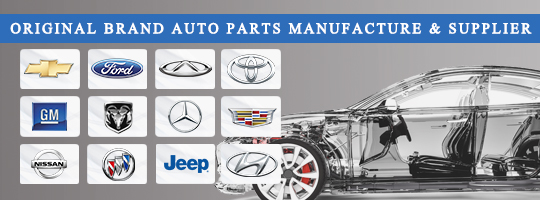First, there are two things to understand about this process.Before about 1997, most vehicles were equipped with inner and outer wheel bearings, both of which needed to be replaced.Front-wheel-drive vehicles often have sealed wheel bearing assemblies that are difficult to maintain, may require some drivetrain assemblies to be removed, and you need to press new bearings into the hub, which means it is easier to hand this type of bearing over to a professional.
The hub assembly is located between the brake drum/disc and the drive axle and is mounted on a fixed bracket on the chassis on the axle side.On the drum/disc side, the wheels are bolted to the hub assembly.The wheel bearing itself is the interior of the hub unit.
These low-maintenance components must bear the load of the vehicle, whether it is in motion or at rest.As you pass through potholes and other patches of uneven pavement, their importance increases even further.And, even if their maintenance costs are low, these wheel bearings are certainly not free of maintenance.
Your goal is to minimize the friction created by the wheel bearings.This can be achieved by using a high quality grease specially designed for high temperatures.However, please be careful not to apply too much grease, as friction cannot be properly eliminated, which can lead to overheating.Repeated overheating incidents may cause damage.
Moreover, even if the correct use of grease can make these parts last longer, eventually they still need to be replaced.In general, you should check and maintain the wheel bearings every 25,000 to 30,000 miles.The average life of a sealed wheel bearing is 85,000 to 100,000 miles, although some can be as long as 150,000 miles.
DIAGNOSING A POTENTIAL PROBLEM—USE YOUR SENSES
Diagnosing car troubles by sound alone is an inexact science, but you should not ignore new or unusual car noises. According to an often-quoted study from Braxton Research, 51% of wheel bearing problems are found because of noise (24% are found during a brake job and 19% during an alignment).
Having said that, although noises from bad hub assemblies and/or wheel bearings come from the area of your wheels, not all strange sounds from the area of your wheels is assembly- or bearing-related. They could indicate a problem with your brakes or CV joints. And if the noise comes and goes with the application of your brakes, the problem is more likely brake-related.
Still, be sure to check your hub assembly and wheel bearings if you hear:
·Clicking, rumbling or groaning noise, especially when turning (this is different from the ratcheting noise heard when a front-wheel-drive vehicle's CV joints are about to fail)
·Grinding noise when turning or rolling straight, which can indicate mechanical damage to the bearings' rollers or races
·Wheel vibration or wobble
·Steering wheel shimmy or shudder
·Abnormal tire wear
·Damage or failure of ABS components, which can result from excessive end-play in a wheel
If you ever sense a vibration from your wheels or your wheels “wobble,” be sure to check your hub assembly and wheel bearings.
CONFIRMING AND FIXING THE ISSUE
Jack up the car into the air and spin the wheel by hand. Can you feel any roughness or excessive drag? If so, you may have a bad wheel bearing. Check your car manual to see the maximum amount of movement that can be considered acceptable.
If you’re unsure whether or not there is too much movement, it’s better to be safe than sorry. You should replace your hub assembly and wheel bearings. Here's how to replace wheel bearings. Even if only one side is bad, it makes sense to replace them in pairs. The “good” side is likely to cause problems in a relatively short time.
Also, after driving the car, you can check the temperature of the hub assembly. Typically, a hub assembly that is worn out will be hotter than the other hub assemblies on the vehicle. This is due to excessive drag produced by the worn out bearings.
DON'T FORGET THE WHEEL SPEED SENSOR
Vehicles with antilock brakes may have a speed sensor built into the hub assembly. The sensor ring may move about as it rotates if there is a worn
wheel hub, which may trigger the appearance of an ABS warning light. Use a scanning tool that accesses your ABS to diagnose.
Meanwhile internal corrosion within the wheel assembly can send up a false alarm of worn parts. If your vehicle has a removable sensor, then simply remove and clean it. then add a zinc corrosion inhibitor to the hub before replacing. If the sensor is not removable, then the entire hub assembly will need to be replaced.
WHAT TO LOOK FOR WHEN BUYING OR REPLACING BEARINGS
Beware of cheap bearings constructed of low quality steel with poor heat-treating. These tend to fail prematurely. Bearings should only need to be replaced once during typical car ownership.
Cheaper hub assemblies might include bearings that are smaller than OEM, which is another factor that could lead to early part failure. Still other cheaper parts contain double ball bearings rather than one stronger bearing. If possible, avoid these choices.
Note that manufacturers recommend a torque wrench rather than an impact wrench when installing. That’s because an impact wrench can damage axle nut threads and CV joints. Plus, the impact wrench can prevent proper torquing of nuts and bolts.
Always consult your owner’s manual first. Follow the manufacturer’s recommendations to make sure you don't void any warranties.
